Article by landscape architect and researcher Anna Aslaug Lund about Human-made urban landscapes for The NXT magazine: Garden of Desire.
In essence, as physical spaces that contain multiple lives and stories, could we not then describe cities as remodeled landscapes? Landscapes that have been carved, molded, split, fitted out by humans over decades, centuries, millennia. And here, in these new human-made urban landscapes, the magic, the wonder, the longing, the nostalgia, arise and grow.
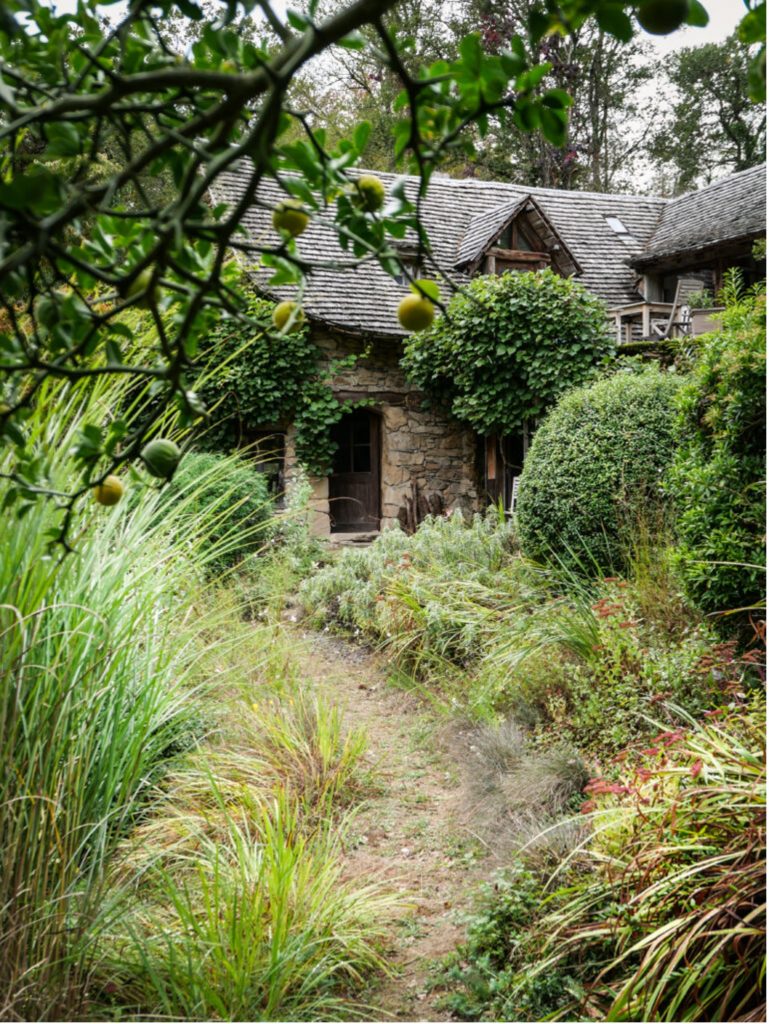
Gilles Clément’s garden in France. In gardens, the human actions and ecologies of nature are commonly generating the form of the spaces. Photo: Anna Aslaug Lund
If we look at Copenhagen, the city emerged more than a thousand years ago from a landscape of damp salt marshes, which have been slowly transformed since the first settlements into a landscape of spires, sewers, parks, pedestrian crossings, masts, homes, cinemas, museums.
Today the transformation of the landscape of Copenhagen has become immensely more complex and has expanded. This applies to Copenhagen and countless other cities on our planet. Granite is transported from China to pave Copenhagen’s new urban space. Soil is dug up and driven over long distances. Concrete is being stacked at an accelerating pace.
Many of us have become brutally aware of the fact that it is exactly this extensive transformation of the landscape and the controlling of nature that has created the climate change and biodiversity crisis that we are already experiencing today and that we can only expect to get worse if we do not change our practices.
What if we could create cities that grow more slowly? Cities that are more attentive.
What if we could create cities rooted in the underlying landscape?
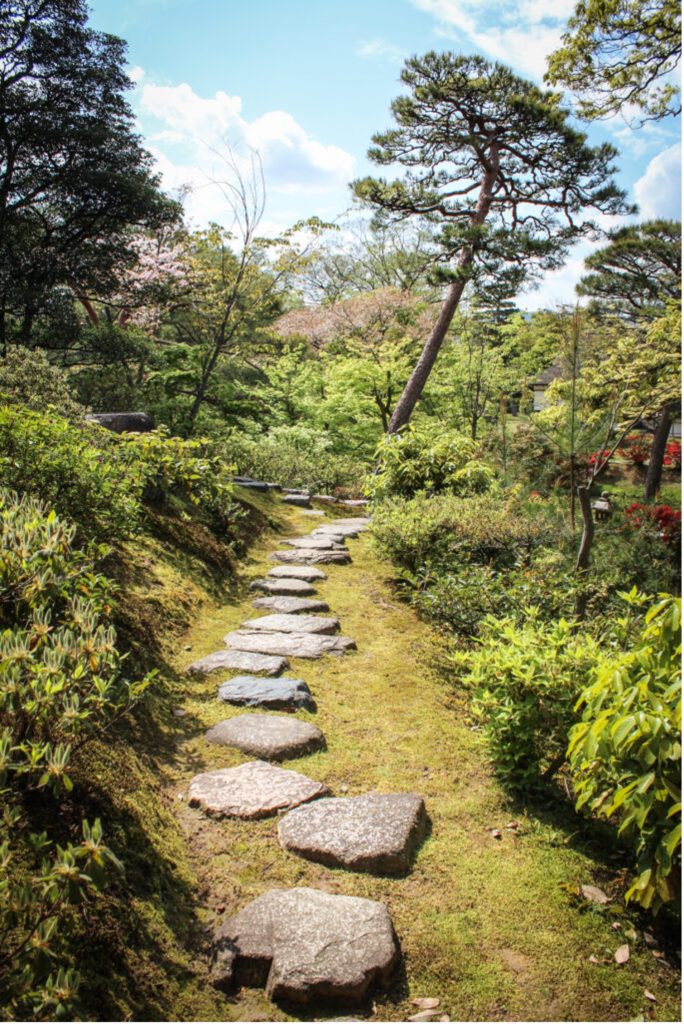
Garden in Japan. In gardens, the movement of the body plays an essential role in the design of the spaces. Photo: Anna Aslaug Lund
I suggest that we should see and understand cities as gardens. Hyper-complex gardens. I suggest that we should use the idea of the garden as both a model for the city and as a laboratory for the city.
In gardens, the human actions and ecologies of nature are commonly generating the form of the spaces. To deeply embed our cities in ecological practices, we need to transmit this idea to urban thinking and start regarding our cities as what they truly are: remodeled landscapes. Just like gardens.
In Western tradition, we have generally identified the city and urbanism as belonging to one category of human intervention and landscape and nature on the opposite side as belonging to another category of no or limited human intervention. I would rather suggest that we modify this categorization. Instead of the city-landscape, urbanism-nature distinctions, I would suggest that we regard city and landscape as belonging to one group of form, and urbanism and nature as belonging to another group of ecologies. The form of the city and the landscape and the ecologies of urbanism and nature are mutually affecting one another. As humans, we need to support the natural ecologies of the city through a conscious curating of the urban ecologies and an informed design of the city.
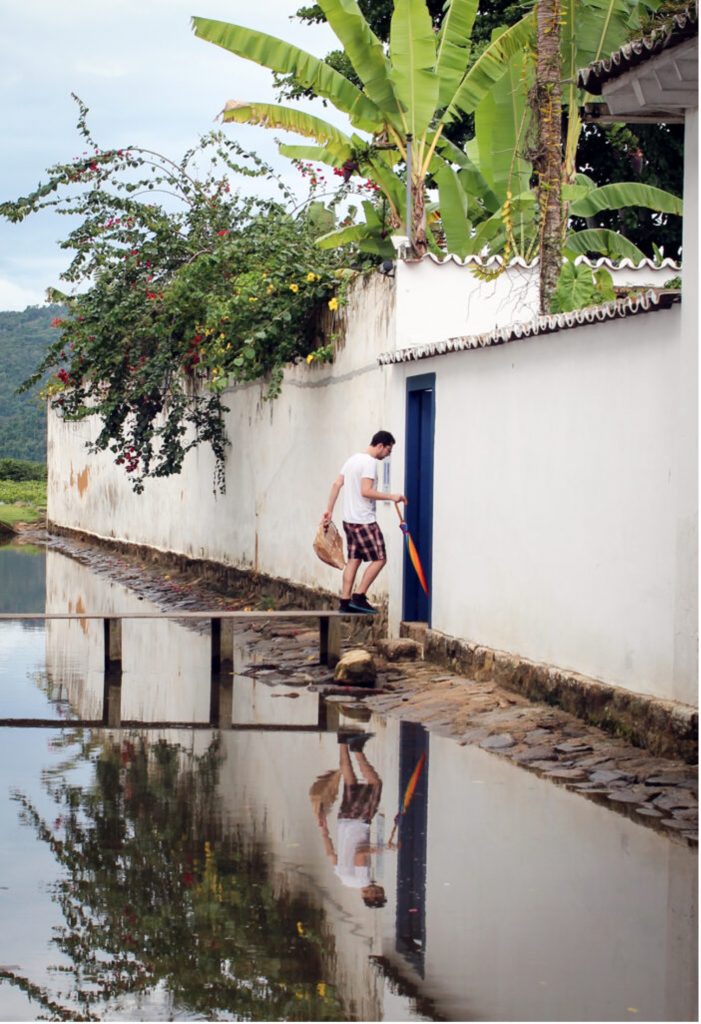
The town Paraty in Brazil. In Paraty the tidal flooding – that is the natural dynamics of the landscape – is integrated in the design of the urban fabric. Photo Anna Aslaug Lund
Applying the garden as a model for human settlements implies a redefinition of the practices of those of us who work with the design and planning of cities. As we cannot foresee all effects of the urban ecologies and natural ecologies, I propose that we adopt an approach to urban strategies and urban design inspired by the dynamic practice of the gardener. The practice of the gardener is constantly alternating between an overall idea (which can be more or less open-ended), the contextual resources and the performance of the form of the spaces.
Just as the gardener masters the relation between the often unpredictable ecologies of nature and the form of the spaces of the garden, we equally need to master the integral relations between both natural and urban ecologies, and the design of the form of the city. It is important to underscore that I do not see the gardener as a character merely controlling and tidying the ecologies of nature based on human needs, but rather as a charterer who reads and listens to these ecologies and who seeks to take care of them in the best possible way with regard to an overall spatial idea.
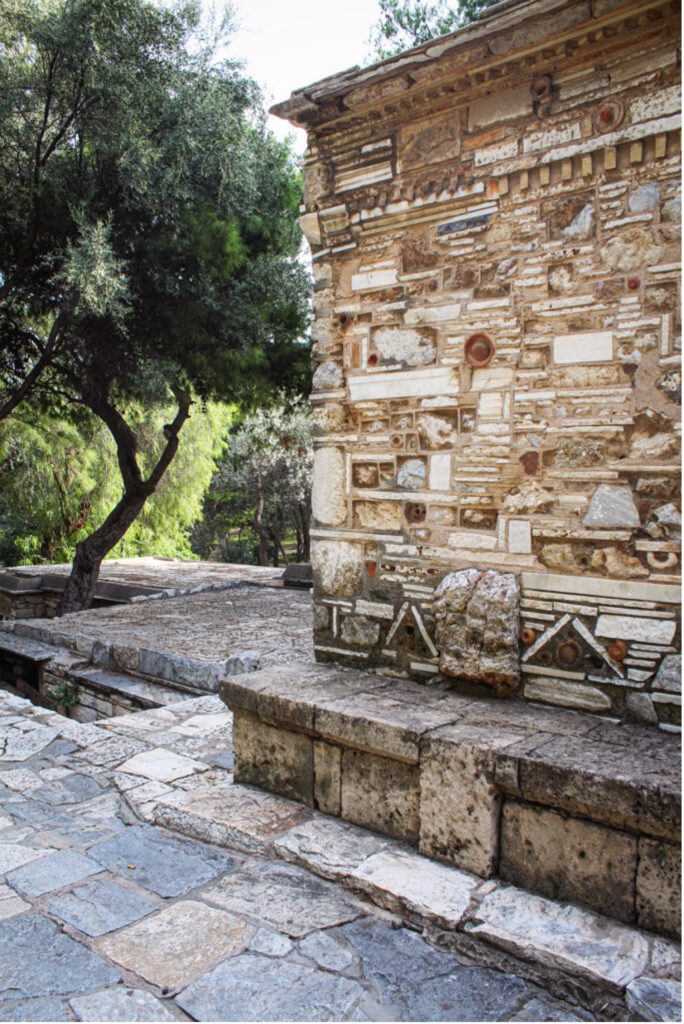
When Greek architect Pikionis designed a new system of paths around Acropolis in the 1950s, he reused material from demolished villas in Athens. Thus, Pikionis’ design was based on a local remodeling of the landscape of Athens. Photo: Anna Aslaug Lund
In my PhD thesis “ROOM FOR RAIN – the city as a garden and the future of streets” of 2018, I examined the idea of regarding the city as a garden. Based on my ideas from my PhD thesis, I am currently formulating a vision for “The City as a Garden”, which will be published as a book by IKAROS Press. In the book, I seek to test and operationalize this garden metaphor by studying and discussing the idea of the garden as a model for the city, and by specifying my interpretation of its values. The vision is directed just as much to urban transformation as it is to urban development. The ideas that I am presenting in this text are a condensed version of my coming book.
As this issue of NXT Magazine clearly demonstrates, we are currently seeing a flourishing discourse engaged with unfolding and exploring the garden as a metaphor and a testbed for imagined urban futures. Thus, my vision is part of a collective movement that aims to develop new urban practices based on the idea and knowledge of the garden. My book is a contribution to this broad movement and network of multiple voices.
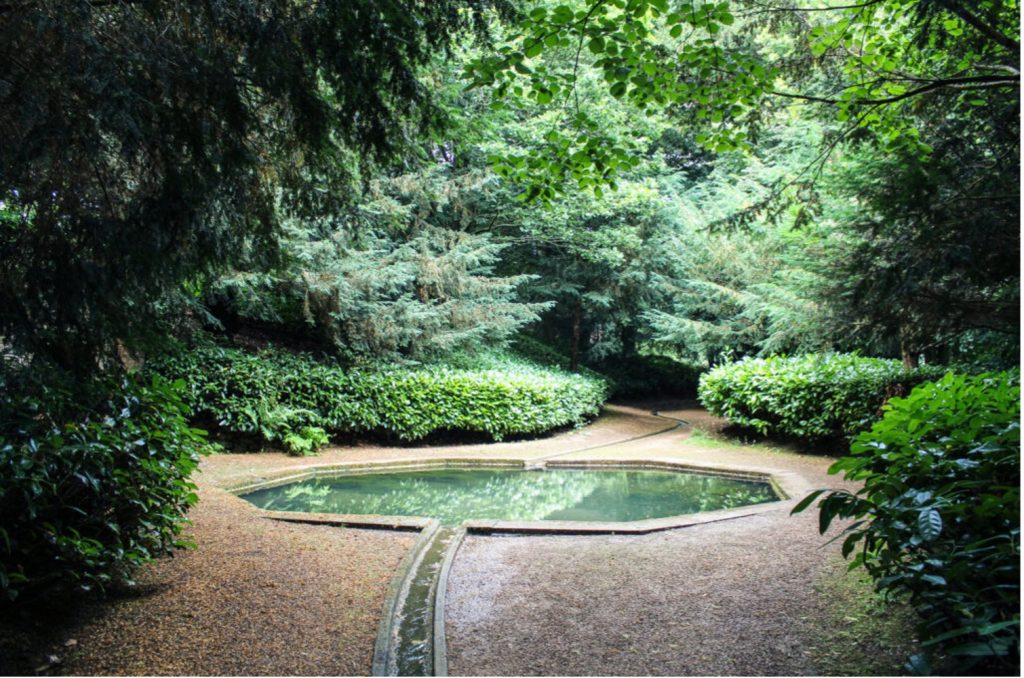
Rousham Gardens in England. In Rousham Gardens, the flow of the water is an essential aesthetic feature of the spaces. Cities can learn from this attention to the water element. Photo: Anna Aslaug Lund